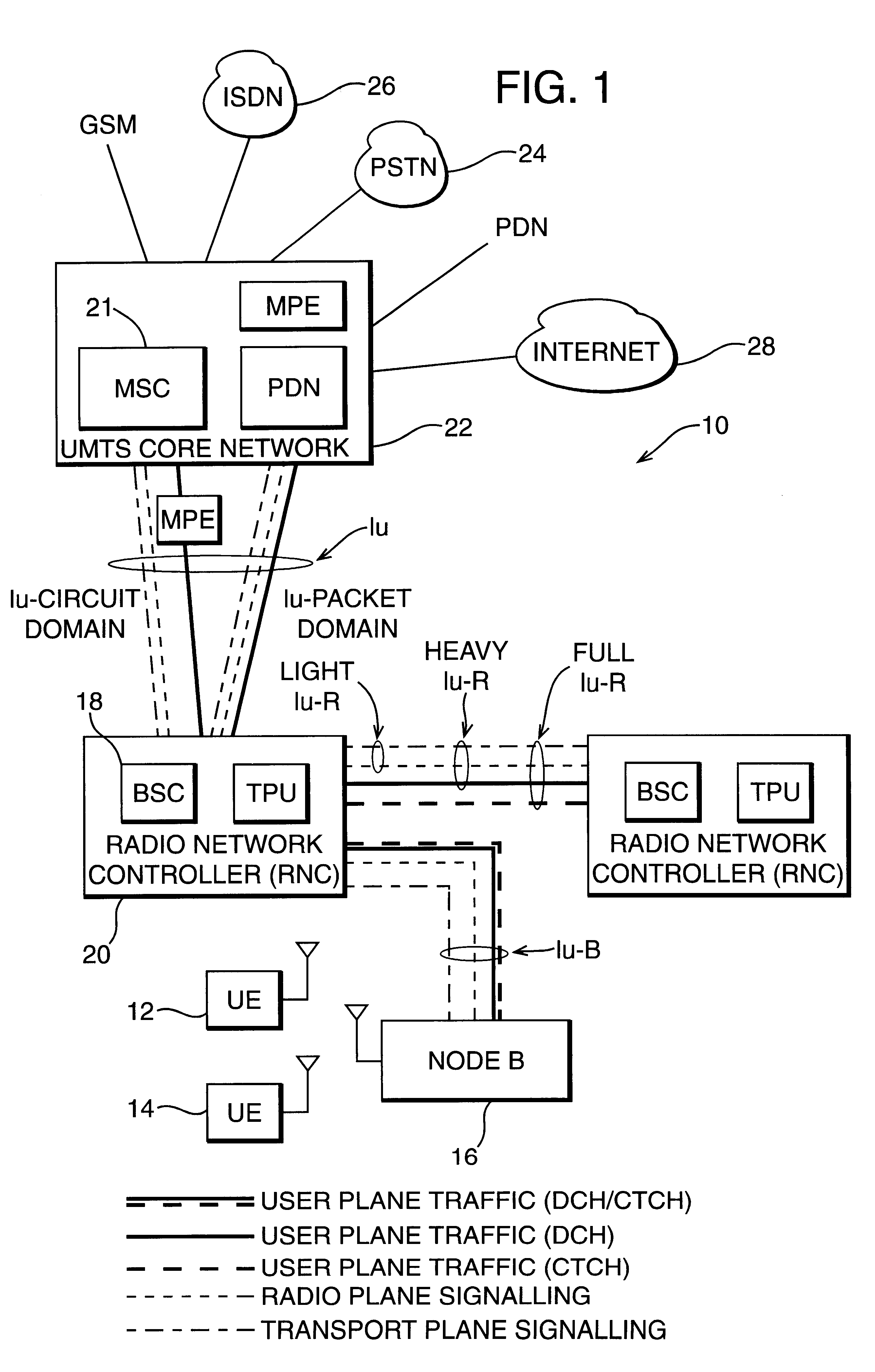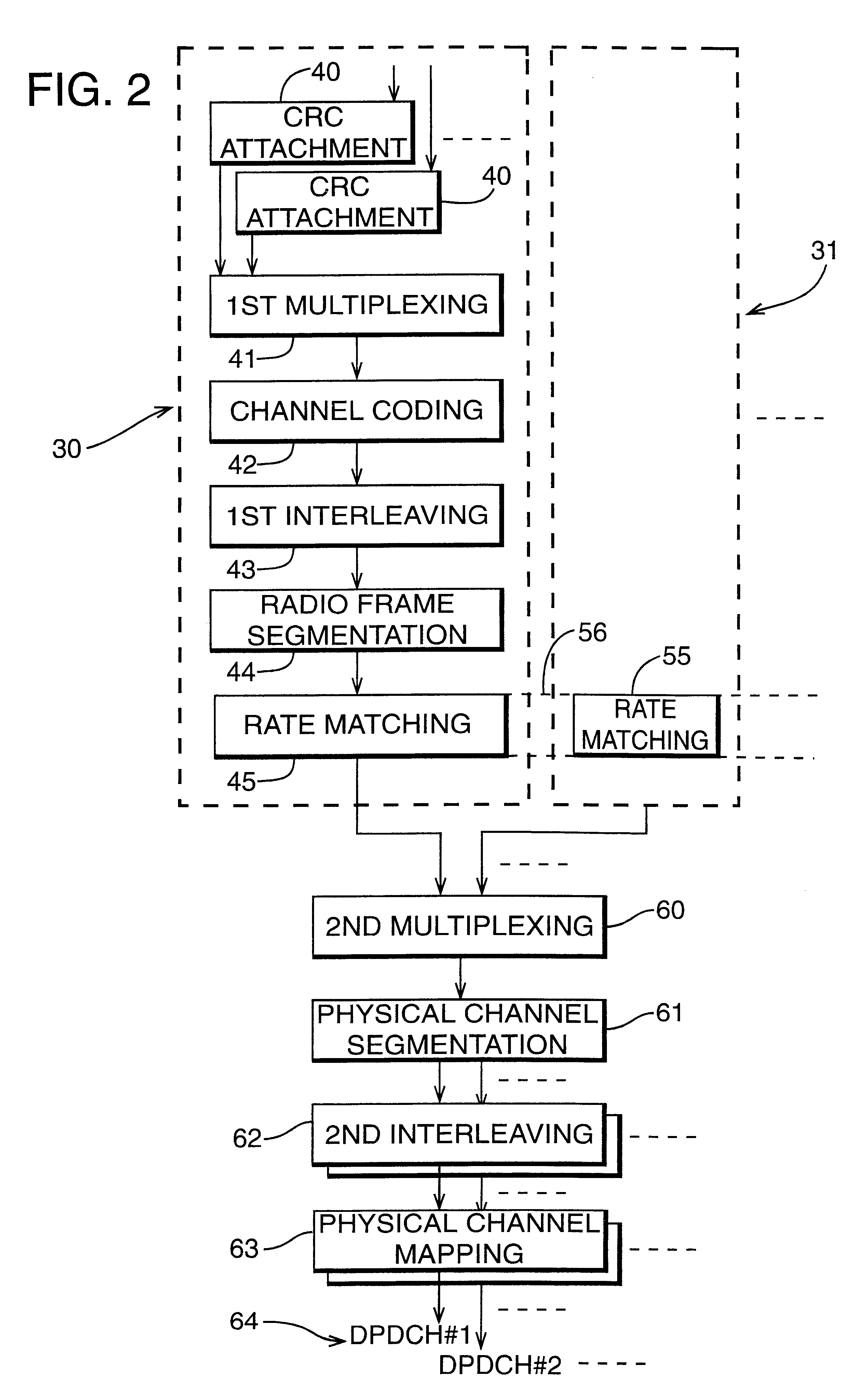Universal mobile telephone system network with improved rate matching method
a universal mobile telephone system and rate matching technology, applied in data switching networks, power management, wireless commuication services, etc., can solve the problem of complex algorithm, inability to apply interpolation to more than two services, and the required transmission power to meet the quality requirements of all transport channels as low as possibl
- Summary
- Abstract
- Description
- Claims
- Application Information
AI Technical Summary
Problems solved by technology
Method used
Image
Examples
example 2
In the following example of the second method according to the invention, a combination of 2 services assumed with the following parameters:
DCH.sub.1 : LCD data service with E.sub.B / N.sub.0 =5 dB, 1 / 3 conv. coding +8 / 9 Reed Solomon (e.g. video)
DCH.sub.2 : UDD data service with E.sub.B / N.sub.0 =3 dB, 1 / 3 conv. coding (e.g. packet data)
The following three service combinations are permitted: {DCH.sub.1, DCH.sub.2 }={144 / 32, 64 / 64, 64 / 32} kBit / s. In table 3, the result for the semi static rate matching is shown. For illustration the values are given logarithmic in dB.
In the current example, the service with the highest requirement on E.sub.cod / N.sub.0 was chosen for reference. It will be evident, that with the proposed rate matching algorithm at least this service needs no semi static rate matching. Table 4 shows the results for the dynamic part of the rate matching for the different assumed service combinations and the calculated number of bits.
The number of data bits for the LDD se...
PUM
 Login to View More
Login to View More Abstract
Description
Claims
Application Information
 Login to View More
Login to View More - R&D
- Intellectual Property
- Life Sciences
- Materials
- Tech Scout
- Unparalleled Data Quality
- Higher Quality Content
- 60% Fewer Hallucinations
Browse by: Latest US Patents, China's latest patents, Technical Efficacy Thesaurus, Application Domain, Technology Topic, Popular Technical Reports.
© 2025 PatSnap. All rights reserved.Legal|Privacy policy|Modern Slavery Act Transparency Statement|Sitemap|About US| Contact US: help@patsnap.com



